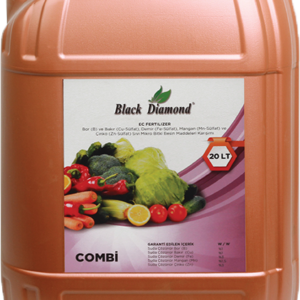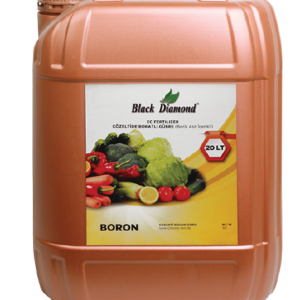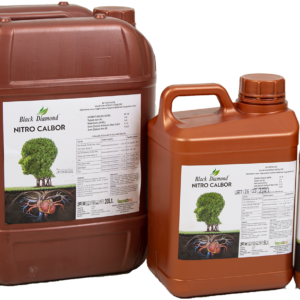Description
Although copper deficiencies or toxicities rarely occur, it is best to avoid either extreme as both can have a negative impact on crop growth and quality.
Function of Copper: Copper activates some enzymes in plants which are involved in lignin synthesis and it is essential in several enzyme systems. It is also required in the process of photosynthesis, is essential in plant respiration and assists in plant metabolism of carbohydrates and proteins. Copper also serves to intensify flavor and color in vegetables and color in flowers.
o It functions as a catalyst in photosynthesis and respiration.
o It is a constituent of several enzyme systems involved in building and converting amino acids to proteins.
o Copper is important in carbohydrate and protein metabolism.
o It is important to the formation of lignin in plant cell walls which contributes to the structural strength of the cells, and the plant.
o Copper also affects the flavor, the storageability, and the sugar content of fruits.
o Root Growth: Copper is the most immobile micronutrient, therefore anything that inhibits new root growth will inhibit Cu uptake.
o Soil pH: Acid soils increase Cu uptake and High pH inhibits uptake.
o Organic Matter: Copper is readily and tightly complexed by organic matter, therefore high soil organic matter levels reduce Cu availability.
o Flooding: Waterlogged soils can reduce Cu availability while they are saturated, however after they are drained the Cu will become available again.
o Cu:Zn Balance: High Zn levels will reduce Cu availability.
o Cu:N Balance: High N uptake in the presence of marginal Cu levels can lead to a reduction of Cu transport into the growing tips of plants.
o Cu:P Balance: High soil and plant P levels can reduce Cu uptake due to reduced soil exploration by mycorrhizas associated with plant roots.
o N Stress: Low N availability decreases the vigor of plants to an extent that it may fail to take up adequate amounts of many other nutrients. Copper uptake can be affected in this way.
Black Diamond Copper Sulfate is an effective Copper liquid fertilizer in chelate from. It is suitable for correcting copper deficiencies. Black Diamond formulation is based on copper, cheated to amino acids and short chain peptides. It is %100 water soluble and assimilate by plants. Black Diamond is suitable for all cultivation where Copper deficiency has appeared. It stimulates plants enzymatic reactions, acts on carbohydrates metabolism, participates in photosynthesis and energy production. Black Diamond Copper Sulfate is applied practicably either by foliage spraying or through irrigation systems.
Copper is essential to the growth of plants. Among other things, it plays a part in several enzyme processes and is key to the formation of chlorophyll.
Copper (Cu) is one of the micro nutrients needed in very small quantities by plants. The normal range in the growing medium is 0.05-0.5 ppm, while in most tissues the normal range is between 3-10 ppm. In comparison, the ideal range for iron in the tissue is 20 times higher than that of copper. Although copper deficiencies or toxicities rarely occur, it is best to avoid either extreme as both can have a negative impact on crop growth and quality.
Function of Copper: Copper activates some enzymes in plants which are involved in lining synthesis and it is essential in several enzyme systems. It is also required in the process of photosynthesis, is essential in plant respiration and assists in plant metabolism of carbohydrates and proteins. Black Diamond Copper Sulfate also serves to intensify flavor and color in vegetables and color in flowers.
o It functions as a catalyst in photosynthesis and respiration.
o It is a constituent of several enzyme systems involved in building and converting amino acids to proteins.
o Copper is important in carbohydrate and protein metabolism.
o It is important to the formation of lignin in plant cell walls which contributes to the structural strength of the cells, and the plant.
o Copper also affects the flavor, the storageability, and the sugar content of fruits.
o Root Growth: Copper is the most immobile micronutrient, therefore anything that inhibits new root growth will inhibit Cu uptake.
o Soil pH: Acid soils increase Cu uptake and High pH inhibits uptake.
o Organic Matter: Copper is readily and tightly complexed by organic matter, therefore high soil organic matter levels reduce Cu availability.
o Flooding: Waterlogged soils can reduce Cu availability while they are saturated, however after they are drained the Cu will become available again.
o Cu:Zn Balance: High Zn levels will reduce Cu availability.
o Cu:N Balance: High N uptake in the presence of marginal Cu levels can lead to a reduction of Cu transport into the growing tips of plants.
o Cu:P Balance: High soil and plant P levels can reduce Cu uptake due to reduced soil exploration by mycorrhizas associated with plant roots.
o N Stress: Low N availability decreases the vigor of plants to an extent that it may fail to take up adequate amounts of many other nutrients. Copper uptake can be affected in this way.
Minimum order: 1000 Lt
No Pallets
20 ‘Container = 1000 Pieces 20 Lt Drums
20 ‘Container = 2000 Pieces 5 Lt Drums
20 ‘Container = 12.000 Pieces 1 Lt Drums
40’ Container = 22 Pieces 1000 Lt IBC Tanks
Max Uploads: 25.000 Kg
PLANTS APPLICATION TIME PROPOSED DOSE
Tomatoes, pepper, eggplant It is applied during the development period. 1000-1500 cc/Ha or 1000 litre water Curly-lettuce-salad It is applied during the development period. 1000 cc/He or 100 litre water Corn It is applied when the plant size is 30-40 cm. 1000-1500 cc/Ha or 1000 litre water Onion-garlic It is applied all development periot 1000-1500 cc/Ha or 1000 litre water Sun Flower It is applied when the plant size is 30-40 cm. 1000-1500 cc/Ha or 1000 litre water Sugar beet It is applied until flowering. 1000-1500 cc/Ha or 1000 litre water Grain (Wheat-Barley-Rice) It is applied between the beginning of the tilling and the erecting period. 1000-1500 cc/Ha or 1000 litre water Grape It is applied all development periot 1000 cc/He or 100 litre water Strawberry It is applied all development periot 1000-1500 cc/Ha or 1000 litre water Rice It is is applied between the rising period. 1000-1500 cc/Ha or 1000 litre water







Reviews
There are no reviews yet.